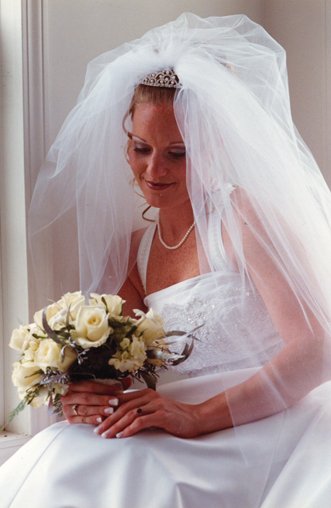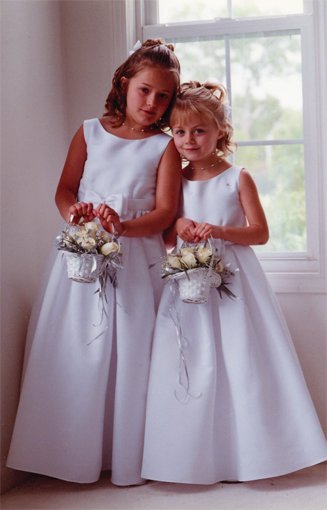articles/Lighting/whatsyourkey-page1
By Norman Phillips
What's Your Key? - part 1 of
1
2
Published 01/03/2003

HAVING "Lighting Techniques for High key Portrait Photography" published by Amherst Media in May and with my second book, "Low Key Portrait Photography" now with Amherst's editor, I tended to view the print exhibit at the Wedding & Portrait Photographers International Convention in Las Vegas with a little different perspective. I was comparing the images on show for impact based on the key they were photographed in.
What I found was that there was distinctly more creativity in many of the high key images than in most of those created in low key. This I found to be most interesting as traditionally images created in low key have always tended to sway the judges and consequently photographers worked more in low key. The greatest challenge in high key has always been to match the drama and impact that can be achieved in low key. This is simply because the darker backgrounds in low key present the subjects in a more stark relief than images placed on a bright or white ground. Additionally, tradition has always been on the side of low key because of the influence of the great painting masters.
If you think about the key in which you want to create your portraits and wedding pictures and you want to develop a consistency in style then you need to decide on one or the other and also because your market niche requires you to be different from your supposed competition. But that decision must be guided by your personal responses to images created in high or low key. I will admit that my personal leaning has always been toward low key because of the influences of Rembrandt, Gainsborough and Rubens and Homer Winslow. But this emotional preference never stopped me from exploring the subtleties and nuances of high key. What I discovered is that high key images can be exquisitely beautiful in a totally different way to images in low key.

High key offers many different options for creating delicate and fragile portraits that simply tug at the heartstrings. Add to this the fact that in the camera room lively toddlers and rapidly crawling babies can be captured in a larger lighting zone than when they are photographed in the narrower lighting pattern we use in low key. But amazing as it may sound very few photographers realize that high key images can be produced outside of the camera room and so high key is less frequently considered as an option.
If you are a wedding photographer your brides are doubtless clothed in beautiful white gowns. But how many deliberately seek to create their bridal portraits in high key? Consider how beautiful a subtlety lit bridal portrait might be if you seek out a bright or white background and light it appropriately. Norman Phillips
I recently discussed this with a wedding photographer and he was puzzled as to how he might light such a portrait. He had never considered the key in which his bridals were to be created. He simply used the first available option as a background and had not thought out how it was to be lit. Yet this photographer was an award winner and considered amongst the best.
In bridal portraits it is most common for the portrait to be made against a low or middle key background so as to show the bridal gown in dramatic relief. But consider the beautiful femininity of the high key image. Bridal portraits in high key produce a harmony of tones that the other keys will not. You can still render the beauty of the gown by feathering the light across the figure.
You are currently on page 1
1st Published 01/03/2003
last update 09/12/2022 15:00:21
More Lighting Articles
There are 16 days to get ready for The Society of Photographers Convention and Trade Show at The Novotel London West, Hammersmith ...
which starts on Wednesday 14th January 2026





